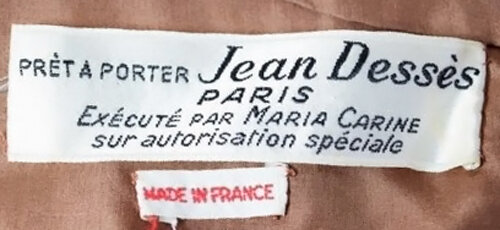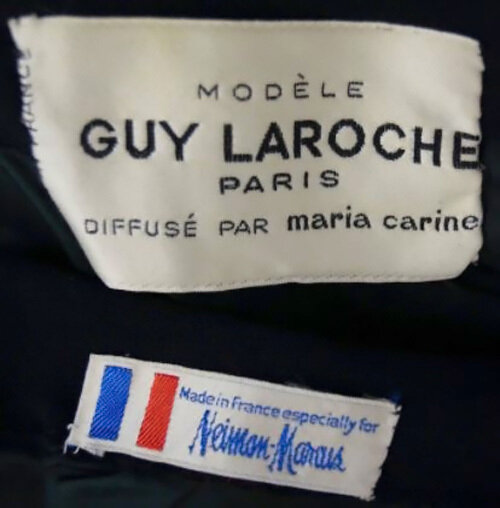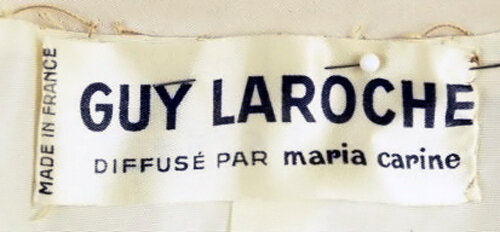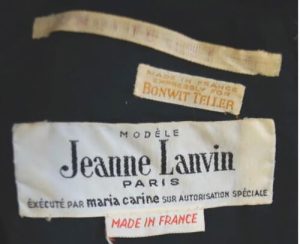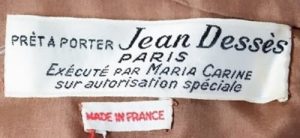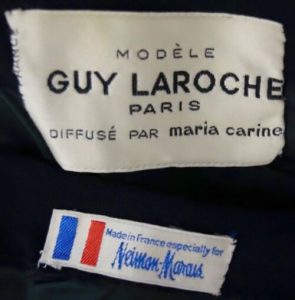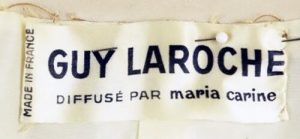Headed by Maria Moutet-Chenu, Maison Maria Carine opened in 1953 in Neuilly on the outskirts of Paris. Prior to that, Maria had been in charge of the production and planning of couture collections at Jacques Heim for three years. She had been making ready-to-wear designs for him since 1952. By 1959, Maria Carine had become the fourth largest ready to wear exporter in France. Although prêt-à-porter, the seams were still finished by hand in the tradition of haute couture. After the couture showings, each couturier would give her sketches based upon the garments they had just shown. Moutet-Chenu made the toiles which were approved by the designers. Then each ready-to-wear garment was cut individually by hand in the Maria Carine workrooms in Paris using the same fabrics that were used for the couture garment. Maria employed hundreds of seamstresses, many of whom worked in their own homes. They sewed each garment individually to exacting standards.
Maison Maria Carine was responsible for the manufacturing of ready to wear collections for couture houses Jacques Heim, Guy Laroche, Jean Dessès and Lanvin-Castillo, predominantly for US export. The other houses represented were Jacques Griffe, Maggy Rouff, Nina Ricci, Madeleine de Rauch, Grès, Carven, and Michel Goma
Before entering the American clothing market, she had imported American dress mannequins so that she can make American sizes and began selling in the American market in 1957.
In a 1961 interview for WWD, she said that season, they expected to make 10,000 pieces. ‘Carine cuts the clothes in the ateliers, then sends them to 500 little women for sewing. The clothes return to the shop for inspection and finishing. Madame Moutet says couturiers used to have a ‘take it or leave it’ attitude about their designs for ready to wear. No more – now they come to the ateliers and work on the toile to make sure it is right.” Maison Maria Carine also sold show models from their own salon at 93 Rue Reamur, Paris. Comtesse Xavier Reumont de Poligny was the directrice for Maria Carine.
In 1967, Mendès, a French clothing production company, founded in 1902 by the tailor Cerf Mendès absorbed Carine. They had worked together from 1950 but by 1957, the two firms, which had previously been complementary allies, became competitors. A consolidation success story, the combined company became the industrial ally of nearly all the first rank fashion houses, from Givenchy to YSL (becoming partners with the Saint-Laurent Rive Gauche), from Dessès to Ungaro, from Laroche to Patou. Didier Grumbach, Mendès’ grandson, and president since 1998 of the French Federation of Couture, Ready-to-Wear, Couturiers and Fashion Designers, oversaw the business. In 1966 he had cofounded Yves Saint Laurent Rive Gauche and was the Chairman of Thierry Mugler from 1978 to 1998.
Written by Vintagiality


